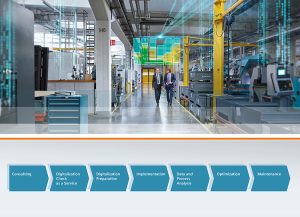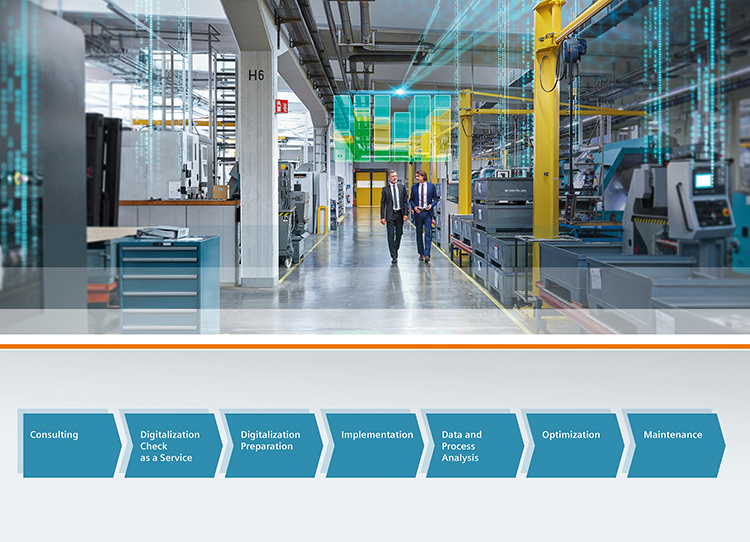At EMO 2017 in Hanover, Siemens exhibited new and expanded digital and classic services with capabilities for identifying and exploiting additional productivity potential for machine tools. Machining companies can use the new ‘Digitalisation Check as a Service’ to create transparency of the digitalisation capability of their machine shops. With ‘Virtual Commissioning as a Service’, machine tool OEMs use a virtual twin to accelerate both commissioning and time-to-market.

At the EMO 2017 in Hannover, Siemens is exhibiting new and expanded digital and classic Services for the machine tool industry – with new capabilities for identifying and exploiting additional productivity potential for machine tools.
‘Digitalisation Check as a Service’ examines how well machines, control units and processes can be networked. With this service, the data of the control equipment in the machine shop is recorded and analysed on site. This is followed by a recommendation for the optimal connection strategy on the path toward digitalisation.
‘Virtual Commissioning as a Service’ shortens time-to-market by using a virtual twin, whereby real commissioning can be accelerated by up to 70%, says Siemens. Moreover, the mechanical development and electrical design departments can save time by co-operating in parallel rather than sequentially as previously. Before the real machine is built, its virtual twin is connected to the real control system, and the machine is commissioned virtually.
These retrofit services include new Sinumerik and Sinamics control and drive technology, workshop-oriented programming with ShopMill and ShopTurn, as well as mechanical overhauls when required. According to Siemens, customers benefit from reduced downtimes, fast machining cycles, a more reliable spare part supply, improved precision and quality, as well as simplified programming and operation.
For further information www.siemens.com















